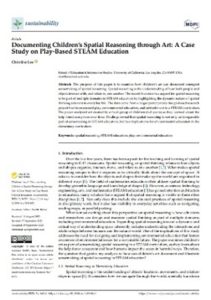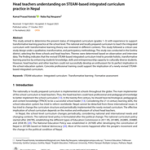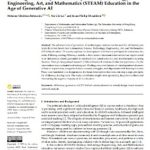
Authors: C. Lee
Type: Journal Article
Abstract:
The purpose of this paper is to examine how children’s art can document emergent sensemaking of spatial reasoning. Spatial reasoning is the understanding of how both people and objects interact with, and relate to, one another. The recent literature has argued for spatial reasoning to be part of multiple domains in STEAM education by highlighting the dynamic nature of spatial thinking relevant in everyday life. The data come from a larger participatory design-based research project that incorporated play, environmental education, and embodiment in a STEAM curriculum. The paper analyzed art created by a focal group of children (6–8 years) as they learned about the kelp forest ecosystem over time. Findings reveal that spatial reasoning is not only an inseparable part of sensemaking in STEAM education, but has implications for environmental education in the elementary curriculum.
Field: STEAM Education



